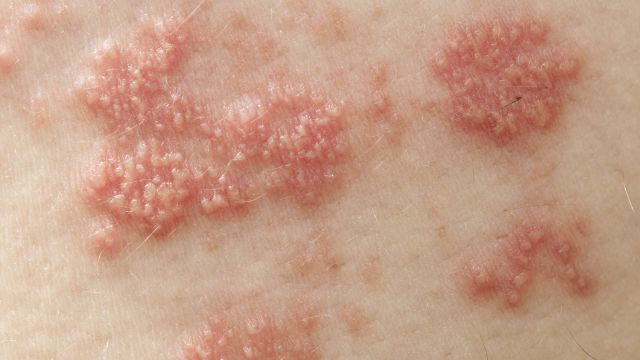If you have shingles or are concerned about getting shingles, you may be wondering how long the rash will last.
Also called herpes zoster, shingles is a reactivation of the same virus that causes chicken pox. This reactivation causes a painful rash, which usually appears on one side of the torso, though it can occur in other areas of the body, including the face.
Shingles step-by-step
Most cases of shingles will last from around three to five weeks. Here is a typical timeline of a shingles outbreak and recovery:
- To begin: You may feel numbness or itching on one side of your body. Burning or tingling pain is also common.
- Days 1 to 5: A red, painful rash appears.
- A few days after the rash appears: The rash becomes fluid-filled blisters.
- Days 7 to 10: The blisters dry up and crust over.
- Weeks 3 to 5: The scabs heal and clear up.
If at all possible, it’s best to see a healthcare provider as soon as symptoms begin. Within the first 72 hours of when the rash appears, your healthcare provider can prescribe an antiviral medication that you take by mouth. This can shorten the duration of your shingles outbreak, and lower the risk of long-term lingering pain, called post-herpetic neuralgia (PHN). Your healthcare provider can also prescribe other treatments to help ease the itching of a shingles rash—such as wet compresses, calamine lotion, and colloidal oatmeal baths—as well as pain medications to relieve the pain associated with shingles.
Post-herpetic neuralgia
Post-herpetic neuralgia or PHN is a potential complication of shingles. A person who has PHN will experience nerve pain after the shingles rash has healed. This pain can occur in the same area as the rash, or it can occur beyond that area. Some people with PHN experience allodynia, where it becomes painful to touch the skin—even things like clothing against skin or wind blowing on the skin can be painful for a person experiencing allodynia.
PHN can last for months. In some cases, it can last for years. The good news is that the pain usually lessens over time. Your healthcare provider can also prescribe treatments to reduce the pain of PHN and refer you to a pain specialist when necessary.
Preventing shingles recurrence
Most people will only get shingles once. However, there are people who have shingles more than one time. Getting the shingles vaccine can help prevent a recurrence of shingles.
The Centers for Disease Control and Prevention (CDC) recommends that people 50 years of age or older who are in good health get the shingles vaccine. People under the age of 50 may also receive the vaccine in certain circumstances and may want to speak to their healthcare provider about getting the vaccine.
The shingles vaccine is not currently recommended for people who have a compromised immune system. This includes people who have HIV, people who are undergoing chemotherapy or radiation therapy for cancer, and people who are taking drugs that suppress the immune system, such as steroids.
The shingles vaccine is administered in two doses and both doses are required in order to give a person the most protection against shingles.






